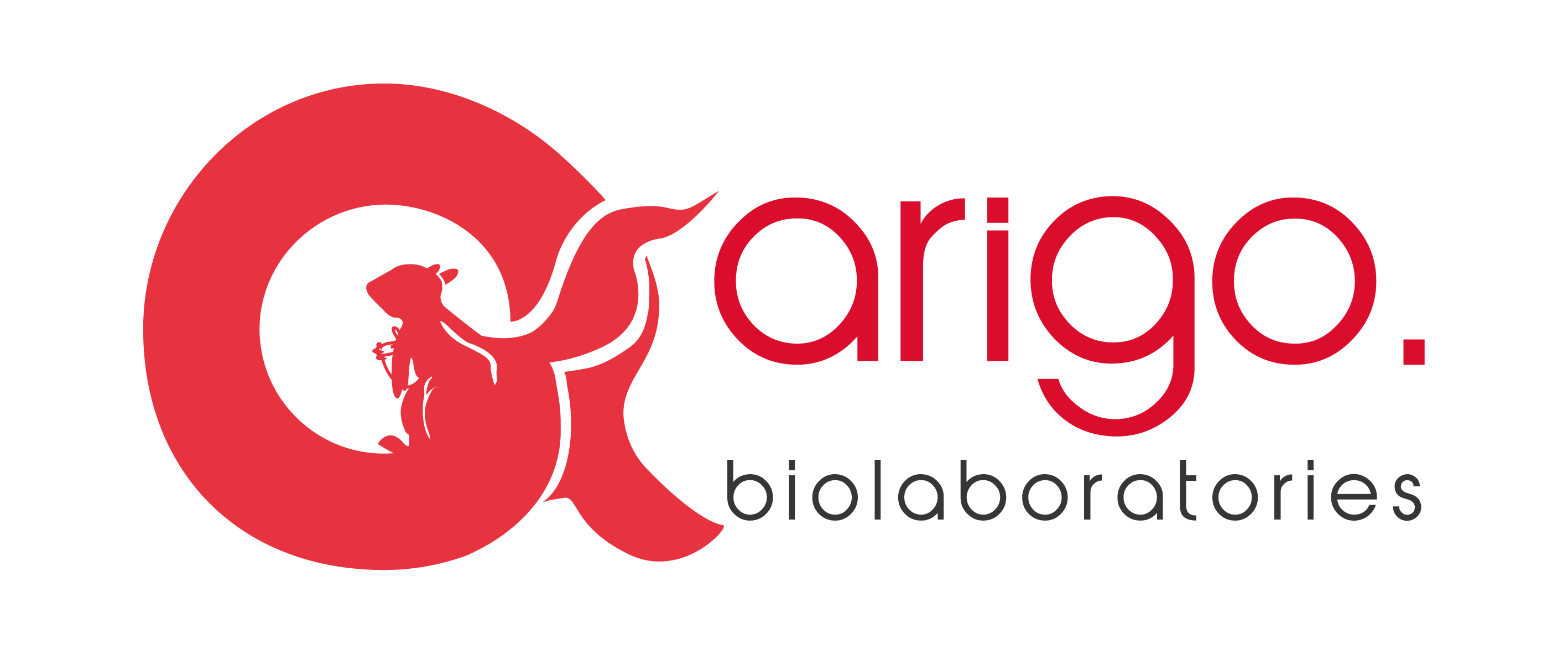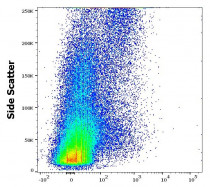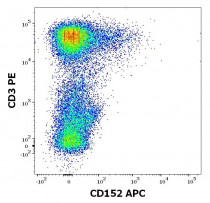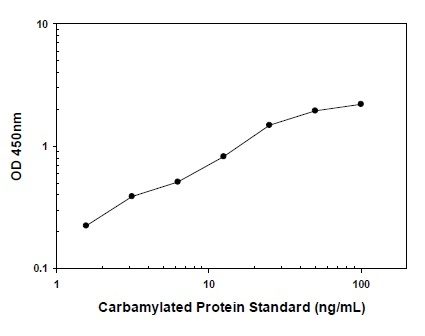anti-CD152 / CTLA4 antibody [BNI3] (APC)
| 产品描述 | APC-conjugated Mouse Monoclonal antibody [BNI3] recognizes CD152 / CTLA4 |
|---|---|
| 反应物种 | Hu |
| 应用 | FACS |
| 特异性 | The mouse monoclonal antibody BNI3 recognizes an extracellular domain of human CD152 / CTLA4, an approximately 45 kDa type I transmembrane protein serving as a negative regulator of T cell responses. |
| 宿主 | Mouse |
| 克隆 | Monoclonal |
| 克隆号 | BNI3 |
| 同位型 | IgG2a |
| 靶点名称 | CD152 / CTLA4 |
| 抗原物种 | Human |
| 抗原 | Human CD152-IgG heavy chain fusion protein. |
| 偶联标记 | APC |
| 別名 | GRD4; CTLA-4; CELIAC3; CD; Cytotoxic T-lymphocyte-associated antigen 4; CD152; GSE; CD antigen CD152; Cytotoxic T-lymphocyte protein 4; ALPS5; IDDM12 |
| 应用建议 |
| ||||
|---|---|---|---|---|---|
| 应用说明 | * The dilutions indicate recommended starting dilutions and the optimal dilutions or concentrations should be determined by the scientist. |
| 形式 | Liquid |
|---|---|
| 纯化 | Purified |
| 缓冲液 | PBS and 15 mM Sodium azide. |
| 抗菌剂 | 15 mM Sodium azide |
| 存放说明 | Aliquot and store in the dark at 2-8°C. Keep protected from prolonged exposure to light. Avoid repeated freeze/thaw cycles. Suggest spin the vial prior to opening. The antibody solution should be gently mixed before use. |
| 注意事项 | For laboratory research only, not for drug, diagnostic or other use. |
| 数据库连接 | |
|---|---|
| 基因名称 | CTLA4 |
| 全名 | cytotoxic T-lymphocyte-associated protein 4 |
| 背景介绍 | This gene is a member of the immunoglobulin superfamily and encodes a protein which transmits an inhibitory signal to T cells. The protein contains a V domain, a transmembrane domain, and a cytoplasmic tail. Alternate transcriptional splice variants, encoding different isoforms, have been characterized. The membrane-bound isoform functions as a homodimer interconnected by a disulfide bond, while the soluble isoform functions as a monomer. Mutations in this gene have been associated with insulin-dependent diabetes mellitus, Graves disease, Hashimoto thyroiditis, celiac disease, systemic lupus erythematosus, thyroid-associated orbitopathy, and other autoimmune diseases. [provided by RefSeq, Jul 2008] |
| 生物功能 | Inhibitory receptor acting as a major negative regulator of T-cell responses. The affinity of CTLA4 for its natural B7 family ligands, CD80 and CD86, is considerably stronger than the affinity of their cognate stimulatory coreceptor CD28. [UniProt] |
| 细胞定位 | Cell membrane; Single-pass type I membrane protein. Note=Exists primarily an intracellular antigen whose surface expression is tightly regulated by restricted trafficking to the cell surface and rapid internalisation;. [UniProt] |
| 预测分子量 | 25 kDa |
| 翻译后修饰 | N-glycosylation is important for dimerization. Phosphorylation at Tyr-201 prevents binding to the AP-2 adapter complex, blocks endocytosis, and leads to retention of CTLA4 on the cell surface. [UniProt] |
ARG42299 anti-CD152 / CTLA4 antibody [BNI3] (APC) FACS image
Flow Cytometry: PHA stimulated human peripheral whole blood stained with ARG42299 anti-CD152 / CTLA4 antibody [BNI3] (APC) (10 µl reagent / 100 µl of peripheral whole blood).
ARG42299 anti-CD152 / CTLA4 antibody [BNI3] (APC) FACS image
Flow Cytometry: PHA stimulated human lymphocytes stained with ARG42299 anti-CD152 / CTLA4 antibody [BNI3] (APC) (10 µl reagent / 100 µl of peripheral whole blood) and ARG53820 anti-CD3 antibody [UCHT1] (PE) (20 µl reagent / 100 µl of peripheral whole blood).
ARG42299 anti-CD152 / CTLA4 antibody [BNI3] (APC) FACS image
Flow Cytometry: Separation of human CD152 positive CD3 positive lymphocytes (red-filled) from CD152 negative CD3 negative lymphocytes (black-dashed). Human peripheral whole blood stained with ARG42299 anti-CD152 / CTLA4 antibody [BNI3] (APC) (10 µl reagent / 100 µl of peripheral whole blood).
 New Products
New Products




![anti-CD152 / CTLA4 antibody [BNI3] (APC)](/upload/image/products/ARG42299_FACS_3_201117_210_205.jpg)
![anti-CD152 / CTLA4 antibody [BNI3] (APC)](/upload/image/products/ARG42299_FACS_1_201117.jpg)
![anti-CD152 / CTLA4 antibody [BNI3] (APC)](/upload/image/products/ARG42299_FACS_2_201117.jpg)
![anti-CD152 / CTLA4 antibody [BNI3] (APC)](/upload/image/products/ARG42299_FACS_3_201117.jpg)














